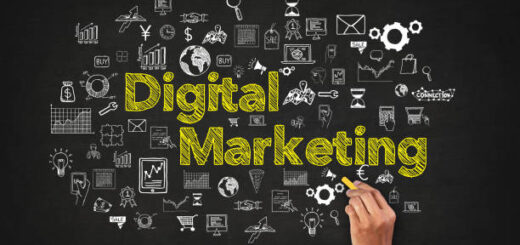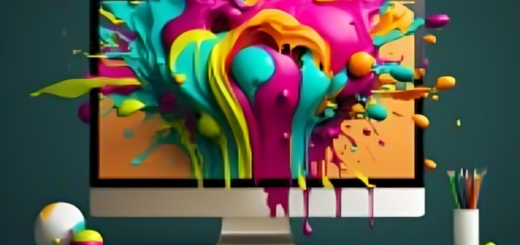What Does a Graphic Designer Do? A Comprehensive Overview
by Admin · Published · Updated

Graphic design is a multifaceted field that combines artistry with communication. It plays a crucial role in how businesses convey their messages and brand identity. In this article, we will delve into the various responsibilities of a graphic designer, exploring the skills required, the processes involved, and the impact of their work on different industries.
Understanding Graphic Design
Graphic design is the art of visual communication. It involves creating visual content to convey messages to an audience. A freelance brand designer employs various elements such as typography, color, imagery, and layout to craft designs that are not only aesthetically pleasing but also functional. This discipline spans numerous applications, including branding, advertising, web design, and print media.
Key Responsibilities of a Graphic Designer
1. Concept Development
One of the primary roles of a graphic designer is concept development. This involves brainstorming and sketching ideas that align with the client’s objectives. Designers often create mood boards to visually represent the theme, colors, and overall feel of a project. This stage is crucial for ensuring that the final design resonates with the target audience.
2. Creating Visual Assets
Graphic designers produce a variety of visual assets including logos, brochures, advertisements, and social media graphics. They utilize software such as Adobe Creative Suite—specifically Photoshop, Illustrator, and InDesign—to bring their concepts to life. Each asset must not only be visually appealing but also effectively communicate the intended message.
3. Branding and Identity Design
A significant aspect of graphic design is developing brand identity. Designers create logos, color palettes, and typography styles that reflect a brand’s essence. This cohesive identity helps businesses establish recognition and loyalty among consumers. Understanding the psychology of colors and shapes is vital in this process.
4. Web and User Interface Design
With the rise of digital media, graphic designers have increasingly focused on web design and user interface (UI) design. They ensure that websites are visually attractive, user-friendly, and optimized for various devices. This includes creating layouts, selecting fonts, and designing icons that enhance the user experience.
5. Print Design
Despite the digital trend, print design remains essential. Graphic designers create materials like posters, business cards, and packaging that require a keen understanding of print production techniques. They must consider factors such as resolution, color modes, and bleed areas to ensure the final product meets industry standards.
6. Collaborating with Clients and Teams
Graphic designers often work closely with clients to understand their vision and requirements. This collaboration involves regular communication and feedback loops. Designers must also collaborate with marketing teams, copywriters, and other creatives to ensure that all elements of a project align seamlessly.
7. Staying Current with Trends
The design world is ever-evolving, making it imperative for graphic designers to stay abreast of the latest trends and technologies. They often engage in continuous learning through online courses, workshops, and design conferences. This commitment to growth allows them to bring fresh ideas to their work.

Essential Skills for Graphic Designers
To excel in the field, graphic designers must possess a unique blend of technical and soft skills.
1. Creativity and Artistic Skills
At the core of graphic design is creativity. Designers must have a keen eye for aesthetics and the ability to conceptualize innovative solutions to visual problems.
2. Proficiency in Design Software
Expertise in design tools is essential. Proficiency in software such as Adobe Photoshop, Illustrator, and InDesign enables designers to execute their visions effectively.
3. Communication Skills
Strong communication skills are vital for understanding client needs and presenting ideas clearly. Designers must articulate their design choices and gather constructive feedback.
4. Time Management and Organization
Graphic designers often juggle multiple projects simultaneously. Effective time management and organizational skills ensure that deadlines are met without compromising quality.
5. Understanding of Design Principles
A solid grasp of design principles such as balance, contrast, and hierarchy helps designers create harmonious and effective layouts.
Impact of Graphic Design Across Industries
1. Marketing and Advertising
In the marketing sector, graphic design is crucial for creating campaigns that capture attention and drive engagement. Effective advertising relies on compelling visuals to communicate messages and encourage consumer action.
2. Technology and Digital Products
As technology continues to advance, graphic designers play a vital role in the development of user-friendly interfaces for apps and websites. Their work directly influences user satisfaction and retention.
3. Entertainment and Media
From album covers to movie posters, graphic design shapes the visual culture of entertainment. Designers craft captivating visuals that entice audiences and enhance storytelling.
4. Education and Training Materials
In educational settings, graphic design is used to create engaging materials that aid learning. Well-designed textbooks, e-learning modules, and infographics can significantly enhance comprehension and retention.
5. Nonprofits and Social Causes
Graphic designers also contribute to nonprofit organizations by creating impactful visuals that raise awareness for social causes. Thoughtful design can drive action and support for important issues.
In summary, the role of a graphic designer extends far beyond mere aesthetics. They are essential storytellers, problem solvers, and brand ambassadors. Through creativity, technical skill, and collaboration, graphic designers significantly impact various sectors, shaping how businesses communicate with their audiences.
Understanding the breadth of their responsibilities not only highlights the importance of graphic design but also emphasizes the skills and dedication required to excel in this dynamic field.



